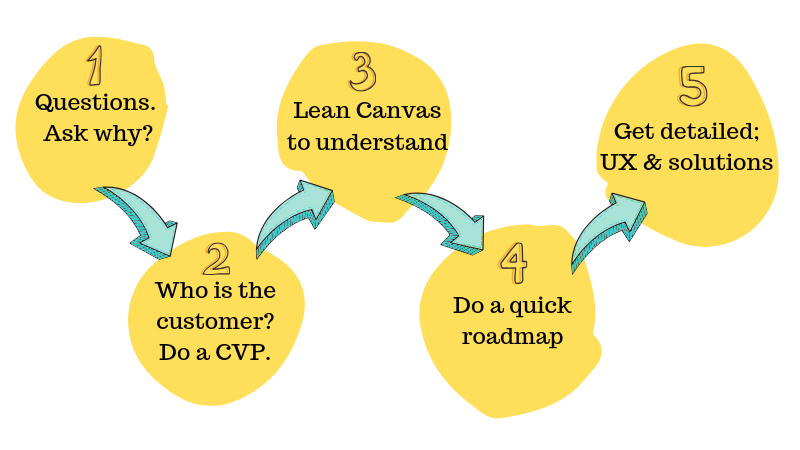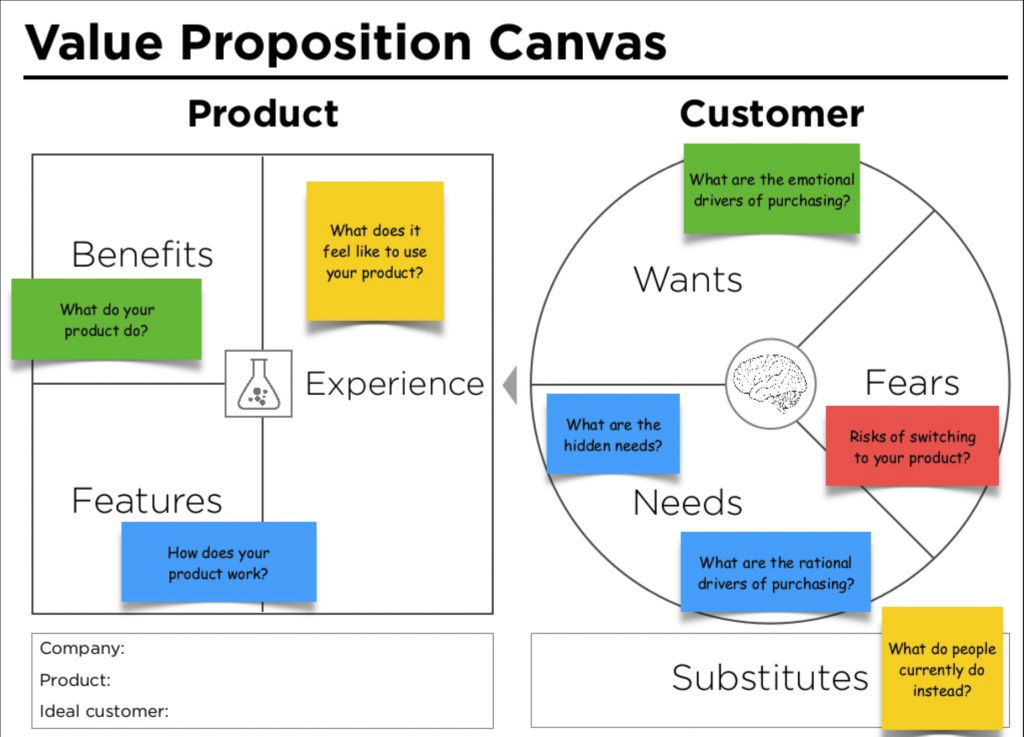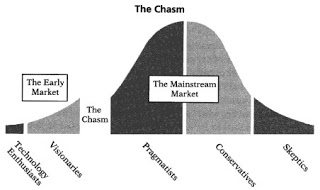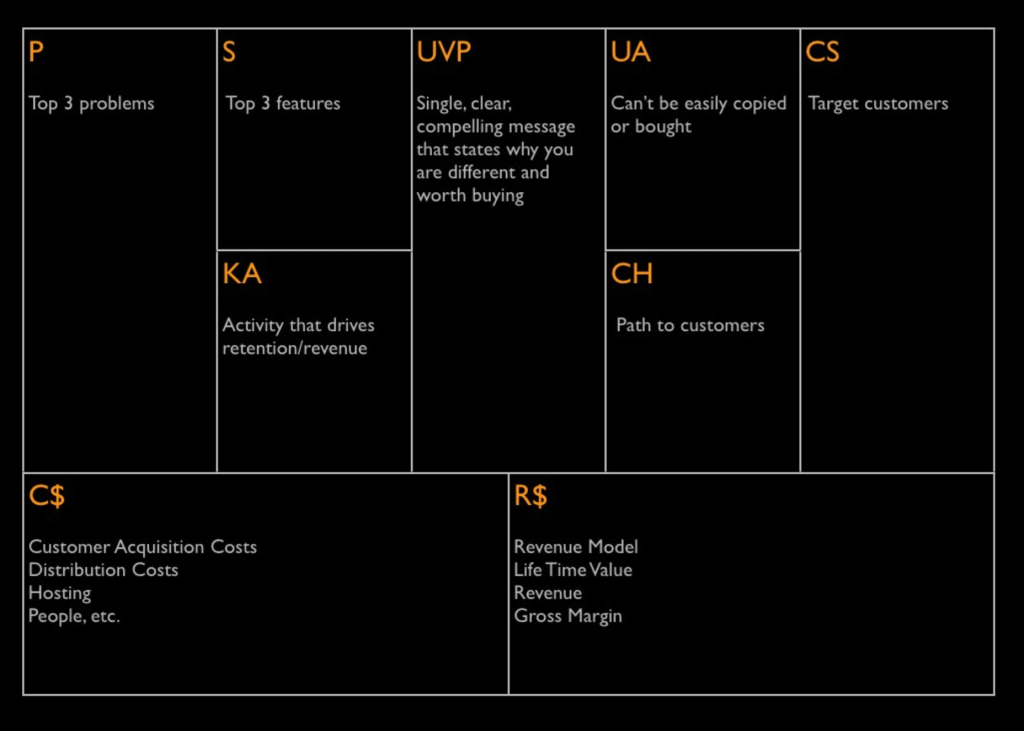
A few times a week I need to rapidly understand a new product, product feature or whole venture. It’s either a venture we’re considering with partners, a client’s product or a colleague I’m bouncing ideas around with. I like to get to the heart of things fast so we can get into meaty conversations and take action quickly, so I’ve developed a playbook.
This playbook has really helped me, hopefully it helps you as well.
It is meant to give you a head start so you can determine what to do next rather than provide a comprehensive understanding.
Without further adieu, here is an outline of the steps in the ‘Rapidly Understand a Product Playbook’:
- Ask lots of questions. Especially why?
- Who’s the customer? What’s the Customer Value Proposition (CVP)?
- Lean Canvas to understand the business
- Quick Roadmap
- Get detailed with UX and Solutions (Optional)
Each of these steps is expanded on below.
Step 1: Listen. Ask Questions
“We have two ears and one mouth so that we can listen twice as much as we speak” – Epictetus.
In most cases, for most of us, the product or feature idea already exists in someone else’s head and we need to understand it. The first step in understanding anything is to listen, so no surprise that it is our first step here. Start by listening and ask lots of questions.
As well as understanding the product yourself, you’re trying to do a few more things here. You need to create a safe environment for the person with the idea to get creative. You need to understand the breadth and nuance of the idea, which takes time and listening (thus the opening quote). You’re also allowing the conversation to wander. You want to make sure you have as much information as possible for the next steps.
Some helpful concepts and techniques are:
- Toyota’s 5 Why’s
- Ask open ended questions
- Practice Active Listening
There comes a point though where you need to start transferring what you’ve heard into some frameworks in order to reach a better level of common understanding whilst improving the idea itself.
Step 2: Who’s the customer? What’s the Customer Value Proposition?
Now you’re ready to start using frameworks and tools to start focusing the conversation.
The place to start is with the only person that really matters, the customer. And I say person deliberately because no matter who you sell to it’s always a person, whether it’s a Fortune 500, a corner shop or consumers.
So, who is the customer?
There will inevitably be a huge list of great potential customers. This is fine, collect them all.
Now working through all of these customers start exploring the Customer Value Proposition (CVP) for each customer. Don’t feel compelled to do every single customer, you may have some standout customers that look more promising than others.

With your list of customers and CVPs you can then start segmenting them and plotting them along the Customer Adoption Curve

Plotting customers along the curve is essential to align everyone and understand for yourself as to who is the best customer to be spending time with. You’re really trying to segment here to find out who your target is for the product idea initially, then who it will be next.
For existing products that you are adding new features to, plotting along the curve is still important. You need to isolate exactly who your idea is going to appeal to. Maybe you realise you need to be focused on the later part of the curve which necessarily brings a different lense to your conversation.
Pro tip: I often see people stumbling here because they get too caught up in the details of the solution or verifying whether the CVP is possible. Park these thoughts for later in the journey. For now, just take it at face-value that the proposed customer segments and CVP is achievable and correct. You can iterate on this later.
Step 3: Lean Canvas to understand the business
Ideas don’t exist in isolation. They need to make sense for the business, Government or other organisation they are going to exist within. The Lean Canvas is a fantastic tool for quickly establishing context.
Walk through each of the tiles on the Lean Canvas (starting with the customer!) and bullet point what you know so far.

The more specific and practical you are with your bullet points here the better. For example, in a recent workshop we were discussing the revenue section on the canvas I pushed the group I was with to price the new product to a fictitious customer. This process of getting specific rather than just writing “charge for product” meant we came to really understand the revenue model.
Sometimes I will take the Lean Canvas and do multiple versions. A canvas for each major phase the product/feature/venture will go through.
Pro tip: If you come into this step having read extensively on each box on the Lean Canvas (e.g. strategy, market segmentation, finance) then it will help immensely. The Lean Canvas (the tool) is only as good as its wielder. Its simplicity hides multiple deep topics.
Step 4: Quick Roadmap
With your customer, value proposition, segments and canvas in hand you should be in a position to sketch out the major aspects of a roadmap.
The roadmap is so important to do early on, even with little information because it forces you to translate your dreams into concrete, achievable steps you can take action on. The process of doing this will either give you a plan or force you to recognise the steps in your plan.
You want to identify the major phases the idea needs to go through. Usually this looks something like:
- Current – where you are currently
- Beta – sign some people up and/or put something in the hands of people
- MVP – something that just meets the needs of a small group
- MMP – something you can scale
- Growth/Sustainability
You want to list under each phase the people/resources required, the outcome for the customer, revenue/costs and any other important points.
The idea isn’t to build a comprehensive roadmap, mainly a high-level view of the key objectives and decision/transition points.
The assumption here is that you have enough customer research or customer understanding to sketch out a roadmap. This is why customer research isn’t listed. If you need to learn more then don’t list the roadmap, you need to do more research.
Step 5: Get detailed with UX and Solutions (Optional)
Having gone through each of the steps above you will have highlighted some gaps in your collective understanding of the idea.
To bridge those gaps you can:
- Mock some User Journey’s and medium fidelity designs to help showcase the customer’s journey. This can help crystalise the idea for everyone or align understanding.
- Mock a Solution. Getting an understanding of how it might be achieved will then help inform roadmaps and CVPs. This step is about mock architectures, process diagrams and methods.
These are so much about research (yet) they are still really about understanding more, developing alignment and assisting productive discussions.
You’re done
Having walked through each of the above steps you will have listened to a new idea, played the idea back in concrete terms, used tools to cover off any blind spots, understood the idea holistically and ultimately gained alignment so you can get cracking on whatever you think your next step needs to be.